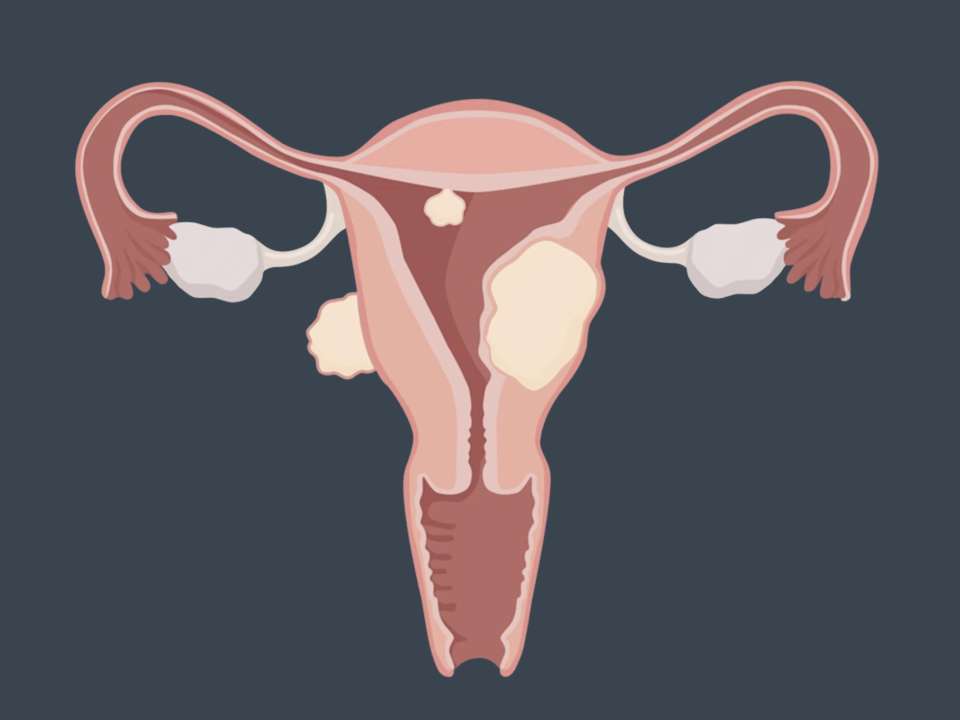
You know the feeling: a turn in the stomach, a wave of nausea, a sharp cramp. All of a sudden, you’re running to the bathroom.
Food poisoning — and the diarrhea, vomiting, nausea, stomach pain and cramps that go with it — is not pleasant. But you are not alone in your suffering: Nearly 50 million people get some kind of foodborne illness every year in the United States, and 128,000 are hospitalized. If you’re really unlucky, your illness might be part of a larger outbreak that makes the nightly news.
In most cases, it’s impossible to know what exactly caused your unfortunate time stuck on (or beside) the toilet. The good news is you can still do things to lower the chances of it happening again.
Why does food poisoning happen?
Food poisoning is most frequently caused by bacteria (hello, salmonella) or viruses (looking at you, norovirus) entering your body via something you eat. Chemical contamination (like paralytic shellfish poisoning) or other biological hazards like parasites and prions can also be culprits. Your food picks up these pesky pathogens on its way to your plate: from the soil where it grows; to the many hands it goes through on farms, in processing plants and at grocery stores; to your own kitchen, which is covered in germs no matter how diligent of a cleaner you are.
Improperly handled, stored and cooked food allows bacteria to grow and viruses to spread, making an untimely trip to the toilet much more likely. For viruses and some particularly mean bacteria, even perfect preparation and storage don’t make them safe once they’re on your food.
For example, refrigerating food contaminated with norovirus doesn’t help.
“The viruses don’t care if it’s cold; you really need to prevent the contamination in the first place,” says Emily Hovis, an assistant teaching professor at the University of Washington School of Public Health and former food safety specialist for the Washington State Department of Health.
But you can decrease your risk of getting sick by not allowing bad germs to multiply or introducing new ones to the mix in the first place.
How to lower your chances of getting food poisoning
While it’s ultimately up to you how careful you want to be, you should know the best ways to mitigate your risk of getting food poisoning.
Pay attention to recalls
You can’t control if food gets contaminated by E. coli before it hits your grocery store, but one thing you can do is pay attention to recalls. They are reported on in the news and you can check the U.S. Department of Agriculture or the Washington Department of Health’s websites to be extra vigilant.
It’s important to make sure that nothing lurking in your fridge, freezer or pantry is part of a recall, especially if it’s shelf stable and might have been there for a while, like peanut butter or raisins.
Avoid consuming raw dairy, eggs and seafood
Some of the world’s most precious delicacies are raw, from oysters and sashimi to eggs over easy and steak tartare. But they’re not cooked to temperatures that will kill bacteria, so eating them makes you vulnerable to pathogens like salmonella and vibrio, a bacteria found in shellfish that causes severe vomiting, diarrhea and abdominal pain.
“Cooking is one of our major preventive controls; pasteurization is just a fancy type of cooking,” says Hovis. “E. coli, salmonella, we can kill these kinds of bacteria with cooking.”
Raw milk can also be dangerous for this reason. It’s not pasteurized and can leave you vulnerable to a host of bacteria.
Even dried raw foods, like raw flour, become good environments for bacteria to grow while being prepared. Bacteria, after all, only need food, moisture and warmth to proliferate, so once you add water or egg to that cookie dough, inactive E. coli and salmonella could spring to life and into your stomach if you sneak a bite before it goes into the oven.
Be extra careful about produce
While milk and meat might seem like the main culprits for food poisoning, fruits and vegetables are just as big of a threat.
Again, fruits and vegetables come from soil containing microbes that can be contaminated. Then we eat them raw. We do have one tool to help protect us: rinsing your produce can get rid of germy dirt particles and decrease your chances of getting sick.
Fruits and vegetables with rough skin, like cantaloupe, avocado and even bananas, are especially susceptible to harboring pathogens, which can then be pushed into their flesh when you cut them. So, depending on how diligent you want to be, you should consider washing the produce you peel, too, ideally with a brush to get in the nooks and crannies. And don’t bother with special produce washes — they haven’t been proven any more effective than regular tap water at removing bacteria.
One other tip? Avoid boxed or bagged salad mixes. They’re made up of greens that come from multiple different farms — if one of those sources had an E. Coli outbreak, the lettuce leaves from that place could cross-contaminate greens from other areas that were safe. By buying a single head of lettuce, your salad is coming from one source, which lowers your chances of cross-contamination.
“That being said, I still buy packaged salad mixes,” says Hovis. “Again, it just comes down to that personal risk assessment.”
Keep it clean and organized
New risks for bacteria, viruses and molds arise once you start preparing your food in your kitchen. It’s far from a sterile environment, and pathogens are floating and lurking everywhere, especially as you cook, waiting for a chance to jump on your food.
“You open the chicken package in the sink, throw the chicken on the fryer, and then use your same sink to rinse your romaine lettuce for your chicken sandwich without washing the sink in between,” says Hovis. “That’s what we mean by cross-contamination.”
Don’t forget to frequently wash your hands as well as the surfaces, cutting boards, knives and bowls you use to prepare food, especially if they’ve come in contact with raw meat, seafood or eggs.
Also, pay attention to how you store food in your refrigerator — store raw meat and eggs separate from fresh produce or cooked leftovers, preferably at the bottom of the fridge, where it can’t drip on anything below it. And make sure your refrigerator is 41 degrees or below.
Avoid the danger zone
The food service industry has an acronym: TCS. It stands for time and temperature control for safety. These are foods that need to be stored at temperatures below 40 degrees (aka in the fridge or freezer), cooked to proper temperatures, held warm at temperatures above 135 degrees (ideally checked with a food thermometer), and not left out in between for too long. Otherwise, they make the perfect breeding ground for bacteria.
These foods include the obvious: chicken, beef, pork, eggs, seafood, milk and cream. But they also include non-meat or dairy products that are susceptible to bacteria growth, like raw sprouts, sliced tomatoes and melons, and cooked starches like beans, potatoes, pasta and rice.
Food safety experts use the “two-hour rule” as a simple guidepost for how long it’s safe to leave a TCS food in the danger zone. In reality, the safe number of minutes or hours depends on many variables, including how much bacteria the food had to begin with, how long it takes for the pathogen to grow to levels that would make you sick and how warm the environment is.
“The two-hour rule is a pretty conservative estimate for how long something would be safe at room temperature,” says Hovis.
But the two-hour rule is conservative for a reason — food safety experts don’t want to confuse the public and would rather err on the side of caution. Another rule of thumb? When in doubt, throw it out.
Finally, don’t worry about cooling your food before storing it — put it right in the refrigerator, even if it’s still hot. Even better, store it in multiple shallow containers instead of one big one so it will cool faster once it’s in the fridge.
Think about your own personal risk tolerance
In the end, if you’re wondering whether it’s OK to keep those leftovers you forgot to put in the fridge or to eat the cheese you packed for a picnic on a hot day, it’s ultimately up to you and your personal risk tolerance — preventing foodborne illness risk is not always black and white.
If it’s a cool day, eating a burrito that’s been in your bag for a few hours is likely going to be fine, but if it’s in the middle of a heat wave, your calculation might be different. If you’re a healthy person rushing out the door to work in the morning, it’s probably not the end of the world if you don’t wash your banana.
On the other hand, people with weakened immune systems, as well as those over the age of 65 or under the age of 5, are at a higher risk of getting sick from foodborne bacteria and viruses in the first place and of suffering from severe complications. So, if you’re pregnant or immunocompromised, your decisions are likely to be a lot more conservative.
“I often use the example of my mom, who is 74 and has been on chemotherapy for seven years, which impacts her immune system,” says Hovis. “She’s had to change her diet and personal behavior a little bit just because she is in that higher-risk population. Like no more undercooked hamburgers for her, it’s just not worth the risk.”
The most important thing is that you make conscious and informed decisions about what you’re putting in your mouth.
What happens if you do get food poisoning?
OK, so you were unlucky and you’ve got food poisoning. You might feel horrible, but it’s important not to panic.
“If you don’t have blood in your vomit or diarrhea and minimal nausea, abdominal pain, dizziness or lightheadedness, it’s OK to stay home,” says Dr. Havilah DeBell, a family medicine physician at UW Medicine Urgent Care Clinics. “Most gastroenteritis, whether from stomach flu or food poisoning, resolves on its own.”
If you’re getting severely lightheaded and dizzy, you might need IV fluids for dehydration, so head to the ER. Same goes for if you have severe abdominal pain, a fever over 100 or blood in your diarrhea.
If you don’t have severe symptoms but need nausea treatment or have symptoms that last more than a week, there is no need to sit in the ER, but you should consider going to urgent care. Submitting a stool sample can help identify what type of germ caused you to get sick and may help identify if your illness is linked to a foodborne outbreak that’s part of a recall. If you recently came back from international travel, it’s also wise to see your doctor or go to urgent care in case any further testing or treatment is necessary to diagnose and treat your illness.
If you think you’ve gotten food poisoning and want to report it, the Washington State Department of Health has a tool to make it easier to do that and help them investigate whether your illness is part of a larger outbreak.
Even though you might feel like you’ll never be able to take a bite of food again, you almost certainly will recover within a few days. And afterward, you might find yourself being a bit more careful about food safety — anything to avoid another 24 hours in the bathroom.

 Healthy ideas for your inbox
Healthy ideas for your inbox





